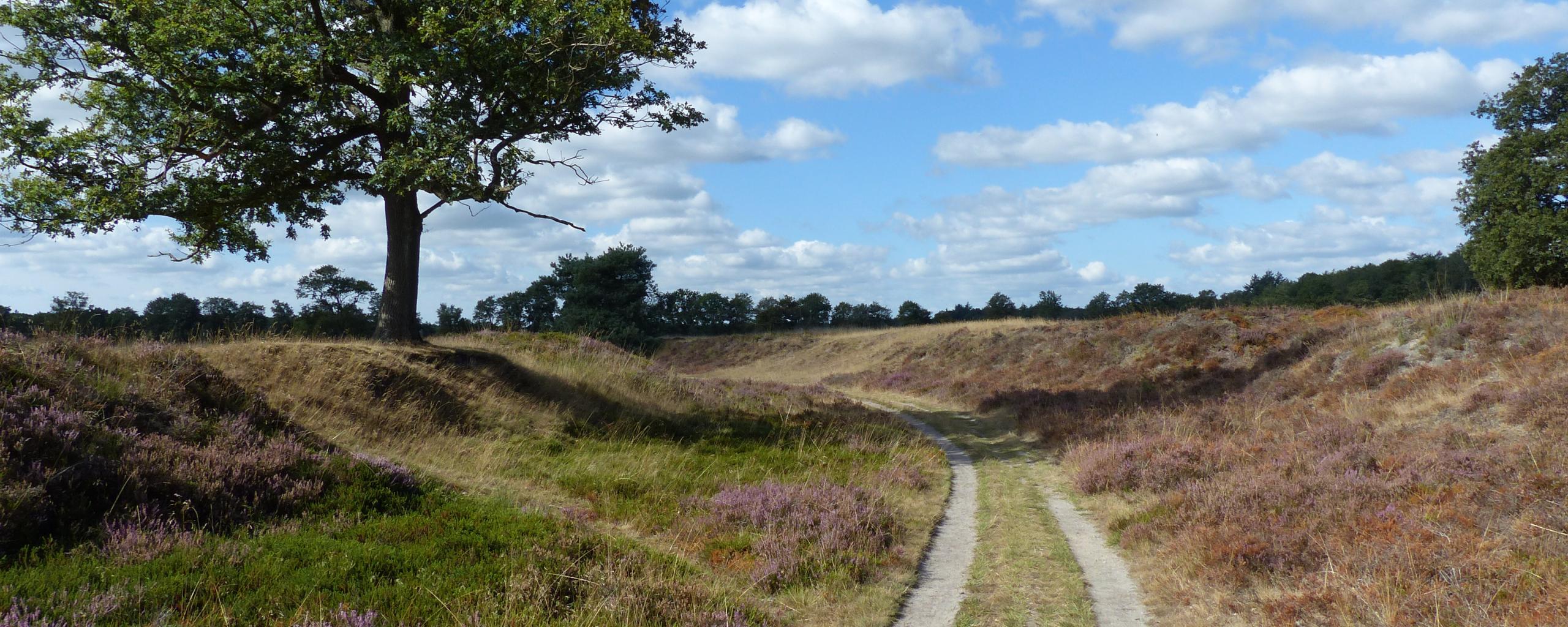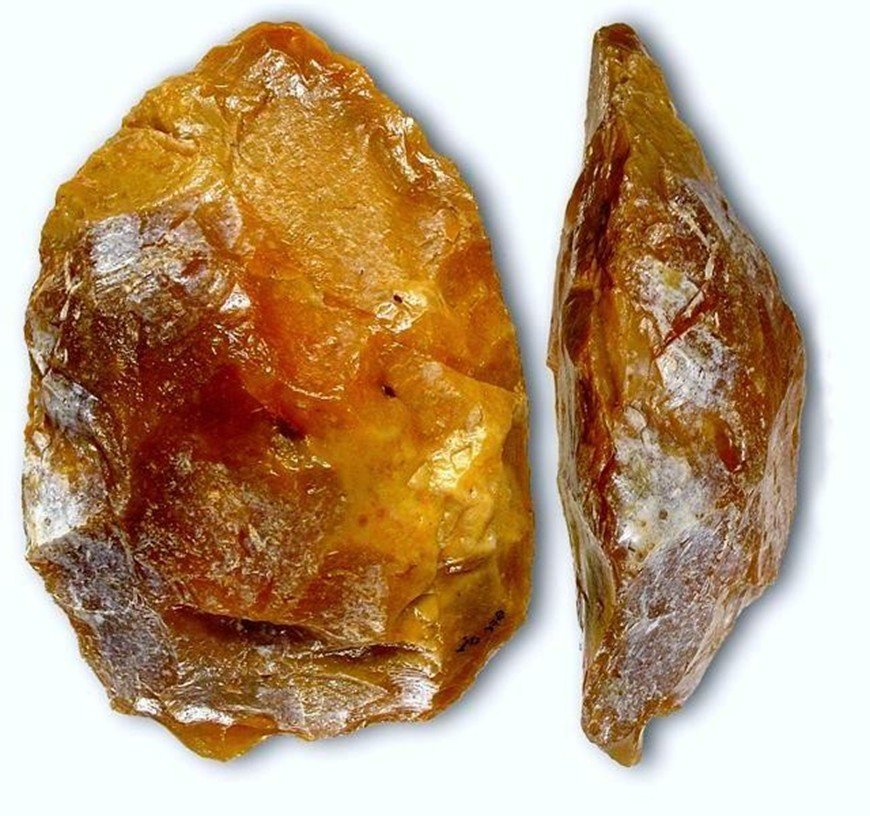
Occupation History
The municipality of Opsterland has a long and special history. From the first hunters to medieval villages and later reclamations: the area changed constantly with climate, nature and the people who lived here. Below you will find an overview per period.

Paleolithic (Old Stone Age - to 9,600 B.C.)
Landscape and life
In warm phases, Neanderthals lived here. They moved around in small groups and hunted big game, such as reindeer and horses. Later came the first modern humans (Homo sapiens). They followed the herds into the open tundra landscape at the end of the Ice Age.
Tools and encampments
Neanderthals and later hunters made flint tools: fist axes, scrapers, spikes and blades. They lived on higher sand, near water and along the Koningsdiep. Near Ureterp, a very large hunter site from the Hamburg culture has been investigated, with thousands of finds.
What changed
As it got colder, people and animals moved south. Around 30,000 B.C., the Neanderthals disappeared. Then Homo sapiens took over the area.
Important local facts
- Fist axe from Wijnjeterp (ca. 110,000 years old).
- Ureterp: largest Dutch site of the Hamburg culture.
- Finds also at Bakkeveen, Duurswoude, Siegerswoude and Nij Beets.
Mesolithic (Middle Stone Age - 9,600 to 4,900 B.C.)
Landscape and lifestyle
The climate became warmer; deciduous forests grew. People lived as hunter-fishermen-gatherers. They stayed longer in one place and moved around seasonally.
Finds and places
Many small and fine implements have been found(microliths). Known sites are located on cover sand ridges and near water. Bakkeveen was the first in the Netherlands to yield a clear Middle Stone Age camp. In Nij Beets an elk antler was found, possibly ritually left behind.
Food and technology
People hunted deer, elk and wild boar, caught fish and gathered nuts and berries. There are traces of cooking pits and cooking stones and sometimes bone or wooden items.
Important local facts
- Permanent camp sites near Bakkeveen (classic find from 1928).
- Many Mesolithic finds at Ureterp, Siegerswoude, Olterterp/Heidehuizen, Beetsterzwaag and Hemrik.
- Cooking pits in the raised cemetery of Siegerswoude (2012).

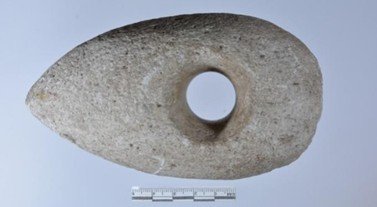
Neolithic (Stone Age - 4,900 to 2,000 B.C.)
Transition to farmers
Around 4,900 B.C., the first farmers appear. They grow grain (including unicorn, bucket wheat), raise livestock and live in wooden houses. Pottery and sharpened stone axes are characteristic.
Funnel Beaker Culture
This group is known from the dolmens (outside Opsterland). Many pottery shards, axes, grinding stones and grindstones have been found in our municipality. Allardsoog is a top find site with richly decorated pottery and axes. In Bakkeveen, traces of flat graves and a workshop for arrowheads have been found.
New groups at the end
In the later New Stone Age came the Single Grave/Standing Foot Beaker and Bell Beaker cultures. They buried people in burial mounds and used new agricultural tools, such as the hook plow.
Important local facts
- Allardsoog: very important site of Funnel Beaker culture.
- Bakkeveen: flat graves, decorated pottery, tools.
- Axes and hammers among others in Ureterp, Duurswoude, Wijnjeterp and along the Beakendyk.
Bronze Age (2,000 - 800 B.C.)
Bronze and trade
Bronze (copper + tin) came from outside the country. Here, bronze axes, spears, jewelry and knives were used. Such finds have been made in Bakkeveen and Wijnjewoude; sometimes possibly as offerings in peat or water.
Farmyards and buildings
Farms became larger. Cattle were housed indoors in the livestock shed. Spiekers (granaries on stilts) stood in the yard. Fertilizing with manure made for better harvests.
Burials and burial mounds
In the early Bronze Age the dead were buried in burial mounds; later also in urns. In and around Allardsoog, Bakkeveen, Duurswoude and Hemrik, burial mounds can still be seen or demonstrated.
Important local facts
- Bronze axes and spears near Bakkeveen; hatchet in the Koningsdiep area.
- Tomb mounds: including Allardsoog (plural), Bakkeveen and Duurswoude.
- Traces of sheds at excavations Oud-Ureterp and Oud-Wijnjeterp.
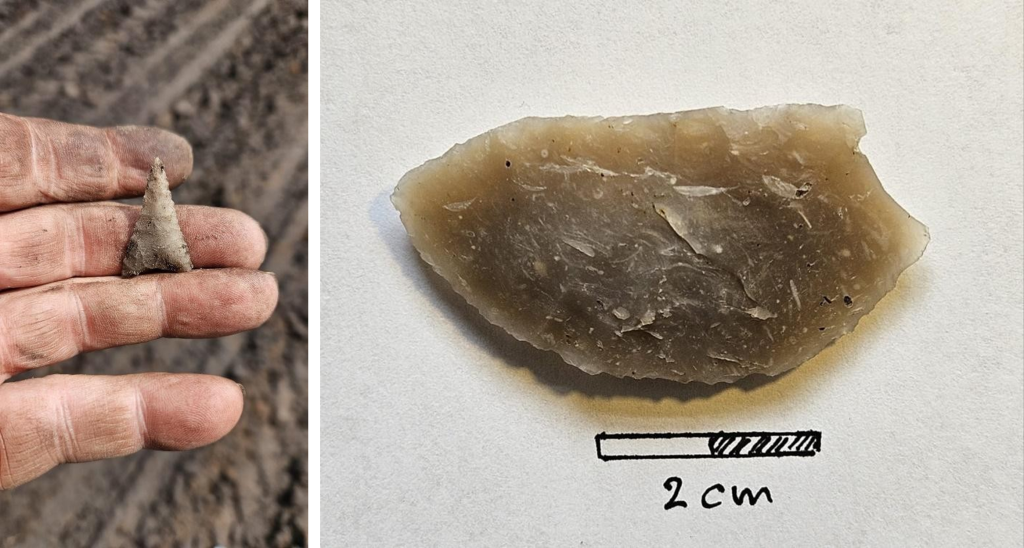
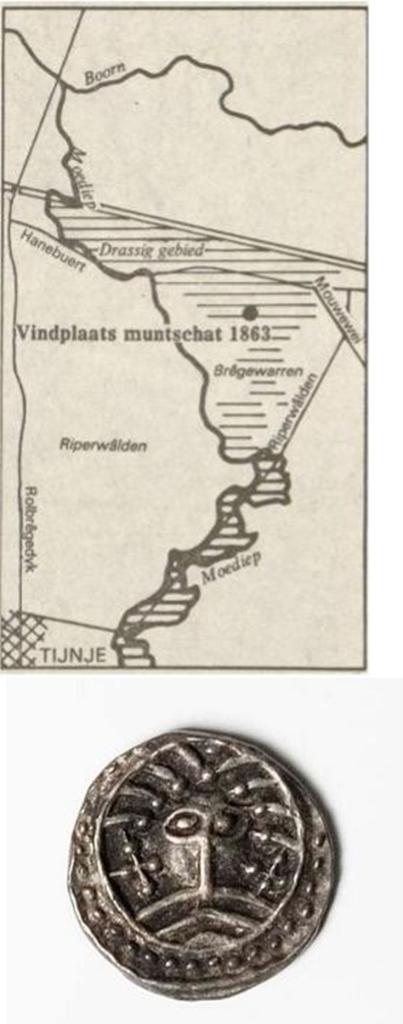
Iron Age (800 - 12 B.C.)
Agriculture in small lots
Iron tools made tilling land easier. Farmers often used small, walled fields(comb fields). In Opsterland no definite castellated fields have been found, in the surrounding area they have.
Occupation and burial rituals
Urns and sherds are known at Allardsoog and Bakkeveen. The wet peat expanded; it became more difficult to live here. Large parts became (temporarily) depopulated.
Extraordinary find later in time
The famous coin treasure of Terwispel (161 silver sceattas, found in 1863) shows early medieval activity in the moorland.
Important local facts
- Loose Iron Age finds near Bakkeveen and Allardsoog.
- Expanding peat: temporarily reduced habitation.
- Coin treasure Terwispel (7th-8th century) found in the peat.
Roman period and early Middle Ages (12 BC - 1000)
Little occupancy, but contact
Opsterland was then largely marshy. There are few traces of permanent habitation, but there are loose finds: coins, jewelry and weapons indicate contact and migration.
Start reclamation from the west
From the 9th-10th century, reclamations begin from the clay area via the Boorne. Small settlements arise on higher strips and mounds along peat waters.
Important local facts
- Silver coin near Ureterp, gold fibula near Mersken/Siegerswoude, sword near the Koningsdiep.
- Early clearings at Veenhoop (neighboring community) and lower Boorne.
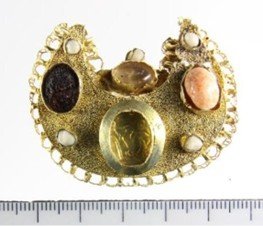
Full and late Middle Ages (1000 - 1500)
Clearing, draining, inhabiting
Farmers drained the peat with ditches at right angles to streams. Thus, long, narrow linear plots and ribbon villages arose along the high sand ridges: including Beets, Beetsterzwaag, Olterterterp, Ureterp, Siegerswoude, Duurswoude, Wijnjeterp, Hemrik, Lippenhuizen and Terwispel.
Churches, monasteries and old cemeteries
There came parishes and chapels. Near Bakkeveen was the outpost/monastery Mariënhof. Traces of old churchyards ("âld/old kerkhof") can be found in the landscape, often closer to the Koningsdiep than the present churches. Among others at Wijnjeterp, Lippenhuizen, Olterterp and Beets.
Farms and yards
Excavations show medieval farm types (Gasselte and Pesse) and spiekers. Yards lay in ribbons and were often surrounded by ditches. Villages "slid" southward or northward with the drainage over time.
Important local facts
- Mariënhof (outfield Smalle Ee) near Bakkeveen; moat, rubble and graveyard traces.
- Wijnjeterp and Ureterp: excavated yards/farms (12th century).
- Old graveyards at Wijnjeterp, Lippenhuizen, Olterterp and Beets; shift of habitation ribbons visible.
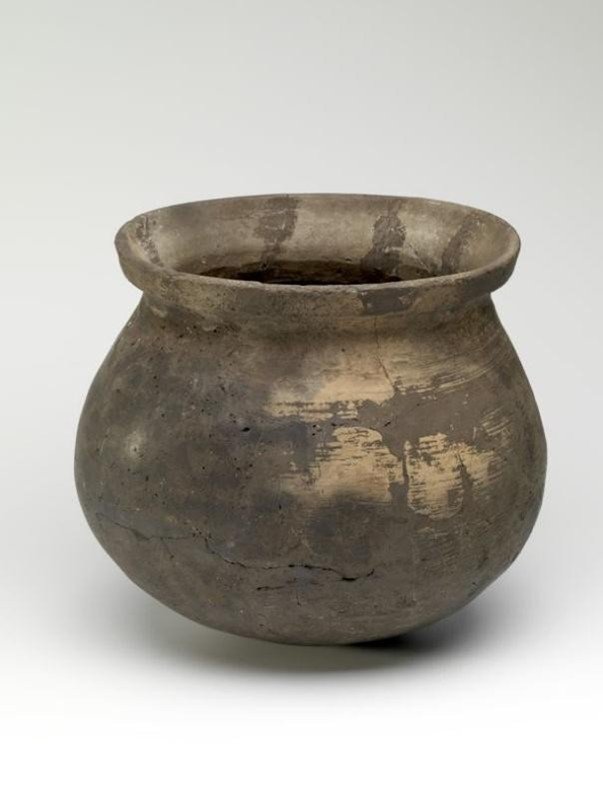
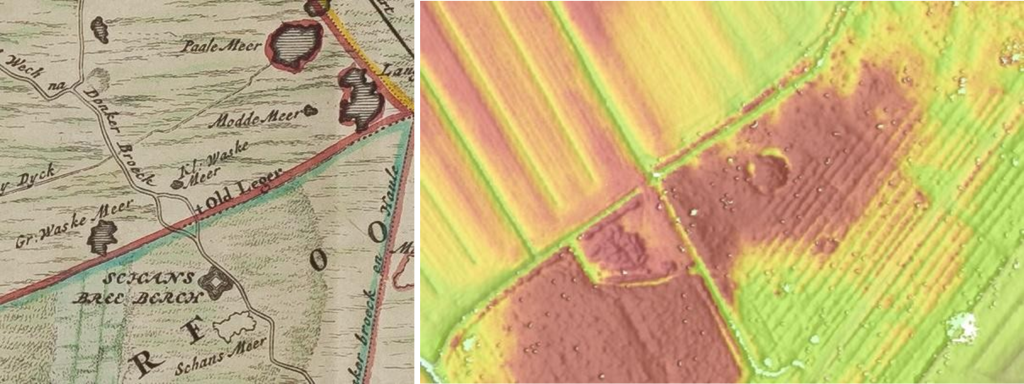
New era (1500 - present)
Peat and new villages
In the new era, the peat was excavated on a large scale. As a result, the landscape changed greatly and new peat villages such as Nij Beets and Tijnje emerged.
Waterline and entrenchments
Opsterland was part of the Frisian Waterline. There were entrenchments at Frieschepalen and Bakkeveen, among others. The Sterrenschans near Bakkeveen is a special training entrenchment from the 18th century and still visible in the landscape.
Finds from the new era
Excavations yield many utensils: glass, pottery, buckles, bullets and weights. They tell of everyday life, trade and military activities.
Important local facts
- Peat mining: origins of Nij Beets and Tijnje.
- Star entrenchment (Bakkeveen) and Frieschepalen entrenchment as part of the Water Line.
- Recent finds in Bakkeveen (glass ca. 1500, buckles, thunderbuss bullet).

